The ASRock X299 Extreme4 Motherboard Review: $200 Entry To HEDT
by Joe Shields on April 26, 2018 8:00 AM EST- Posted in
- Motherboards
- Intel
- ASRock
- X299
- Basin Falls
- Skylake-X
- Extreme4
BIOS
On the Extreme4, the board was shipped with BIOS 1.12 - there has since been an update to BIOS 1.30 which has the Meltdown/Spectre updates in them. When we first boot up, the Extreme4 presents us with the "Main" screen in the advanced version of the BIOS first. The Main screen is informational only showing the UEFI version, processor type, speed, and cache amount, total memory, and more.
The Ex4 does have an easy mode, which I am surprised that this board doesn't boot into by default. The EZ Mode is also more of an informational screen but does have a few editable options. Like the Main screen, we can see the UEFI version, processor type and speed, DRAM and storage information, fan speed, temperatures, and boot priority. Users are able to enable XMP profiles, RAID modes, adjust boot priority and fan speed control as well. The CPU EZ OC button is for simple, one-touch overclock and enables the first level of Optimized CPU OC settings from the advanced BIOS of 4.2 GHz.
The OC Tweaker section below is where overclockers will spend most of their time. This section holds all the options needed to overclock the CPU and memory. ASRock divides this up into four sections: CPU / DRAM / Voltage / FIVR Configuration. The CPU Configuration section is where the CPU ratio and mesh can be adjusted as well as power saving features like Speedstep. This is also where users can apply AVX offsets. The DRAM configuration section is where users will find the memory options. XMP profiles can be enabled here as well DRAM frequency changes and memory timings changes are all found here. The voltage configuration portion is where users can change options from the Input voltage, Load-Line Calibration, VCCIO and VCCSA, to the DRAM channel voltage. Last, the FIVR configuration is where we are able to control and of the voltage domains such as Vcore, CPU Mesh, System Agent voltage. There are plenty of options available here for overclocking.
The Advanced section of the BIOS lists several options from CPU configuration (enabling/disabling HT, number of active cores, etc), Chipset configuration (PCIe link speeds, LAN and Audio), Storage Configuration (SATA and M.2), as well as USB configurations. This section is also where users are able to choose their landing page in the BIOS. If a user wants the system to enter EZ Mode first when entering the BIOS, then the OC Tweaker screen, simply adjust the settings.
The Tools section groups a few handy items together with their own utilities to control board functionality. RGB LED control, Easy RAID Installer, UEFI update options (Instant Flash and Internet Flash) as well as network configurations.
The H/W Monitor section gives users an idea of CPU and motherboard temperatures as well as fan speeds and voltages from the major domains as well as from the power supply. Towards the bottom of this section is where users are able to use ASRock's Fan-Tastic Tuning to adjust fan speeds and use profiles.
The Boot header contains options to change the boot order as well as change boot options such as HDD priorities for multiple drive boots, fast boot, and other boot-time options.
Software
As far as included software goes, the included installation CD gives users what they need to get started for drivers. It includes the INF and ME drivers, Audio, LAN, and the ASRock APP Shop. It also includes utilities such as Restart to UEFI, and ASRock RGB LED to control the integrated and attached LEDs.
ASRock's Live Update and App Shop application keep tabs on the basic drivers and BIOS versions and notifies users if there is an update to any. This can be a useful application to keep up to date.
ASRock also has the A-Tuning application which monitors the system and allows for changes to fan speed as well as overclocking. There are not as many options as we find in some other similar applications from their competitors, however, it has what most will need if they wanted to overclock from within Windows. The basics are all there.
ASRock RGB LED is the application used to adjust any of the system lighting be it the integrated RGB LEDs under the chipset heatsink or any the user may attach to the board via its two headers. It has several styles to choose from as well as being able to make any RGB color.
For audio is the Realtek HD Audio Manager. This is a standard interface supplied with many systems, with presets and EQ settings available.


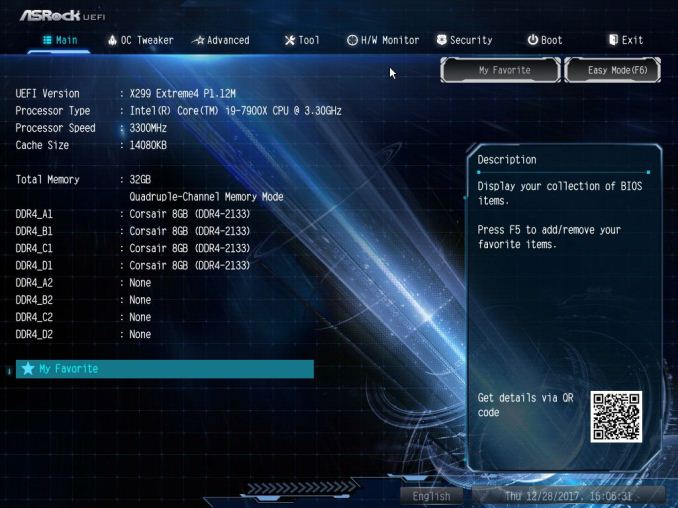
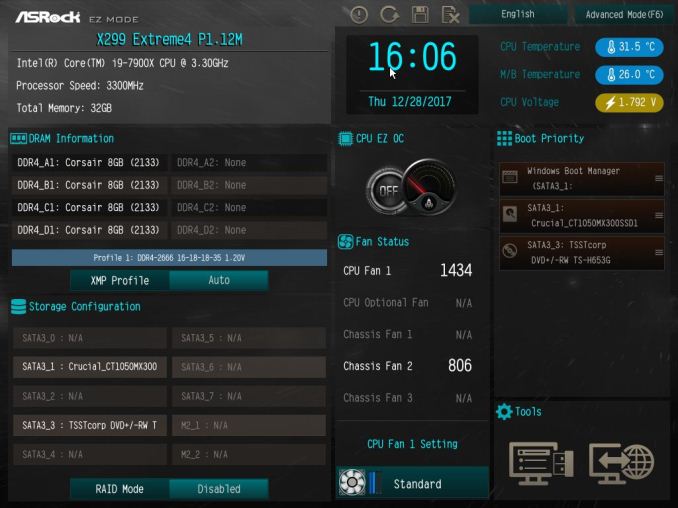
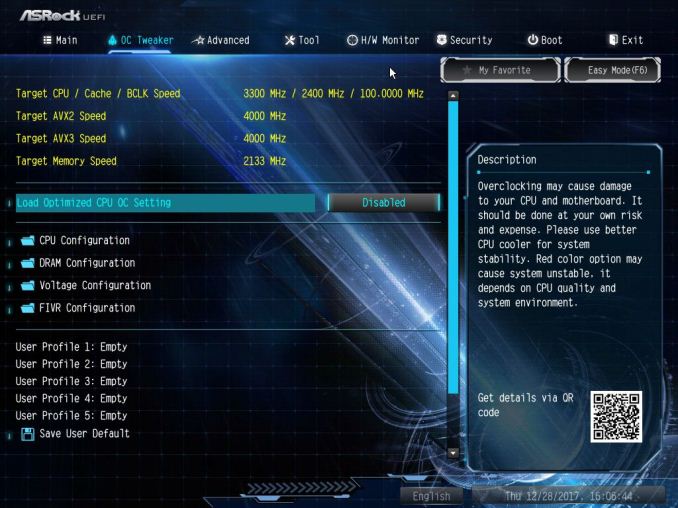


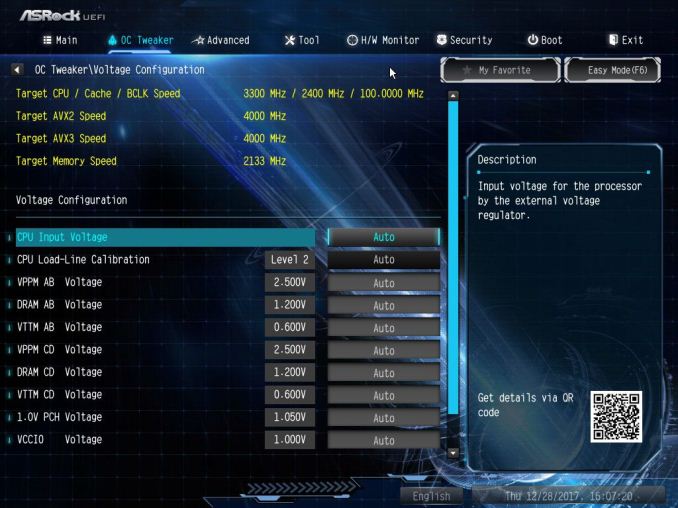
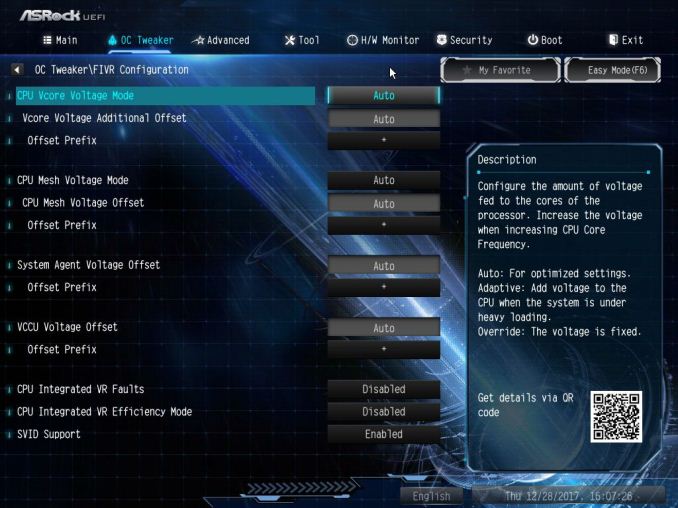
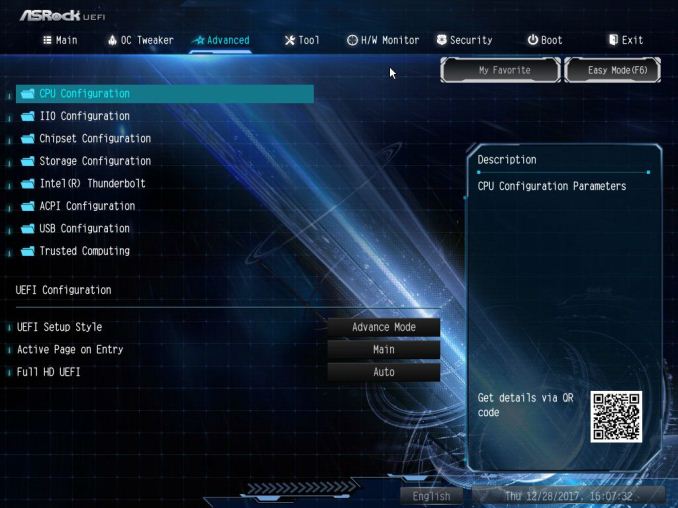
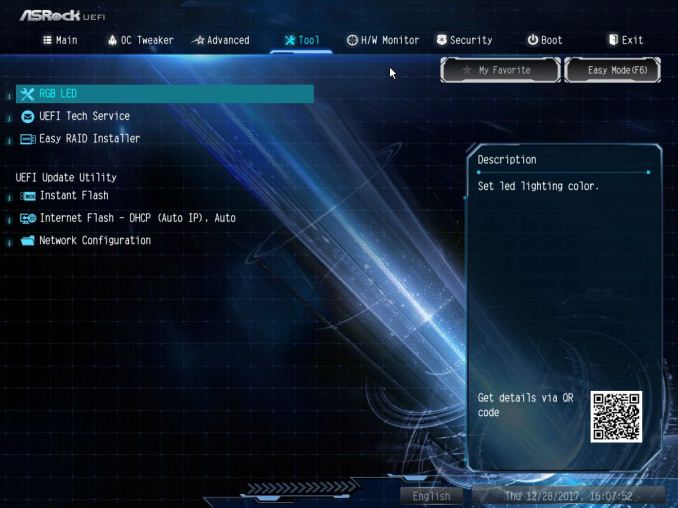

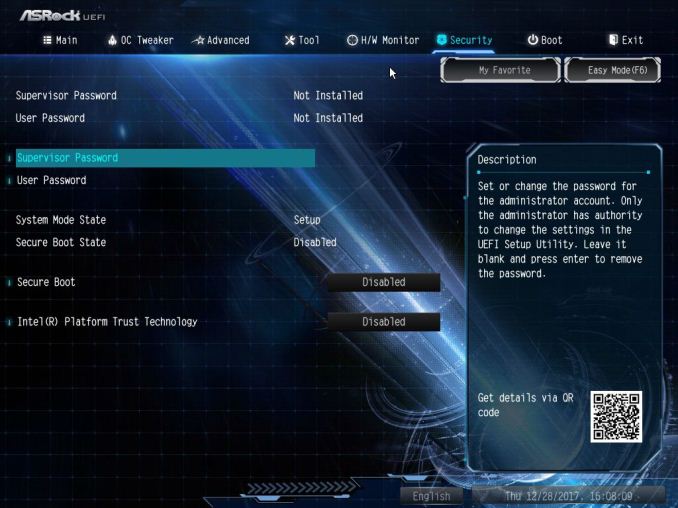
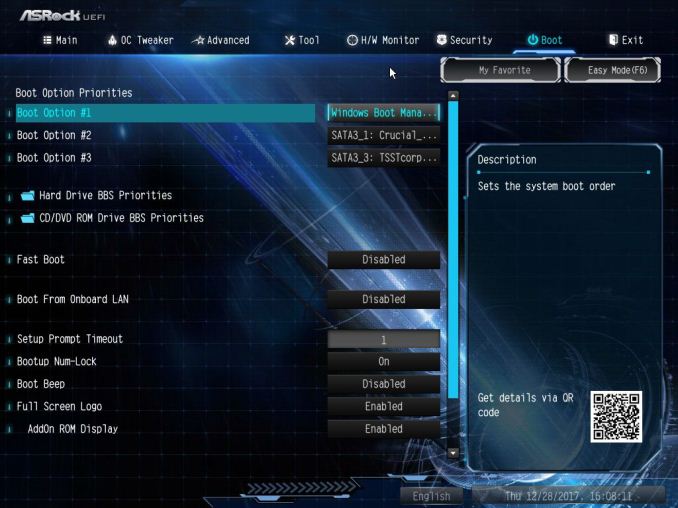







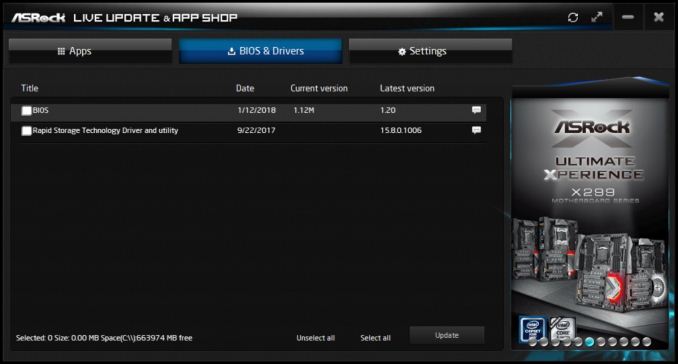
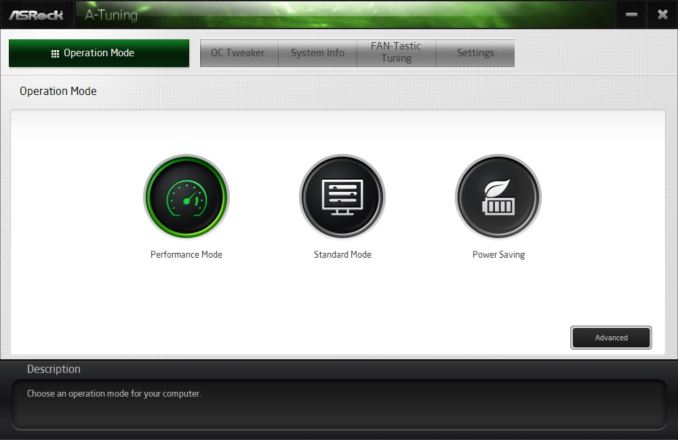
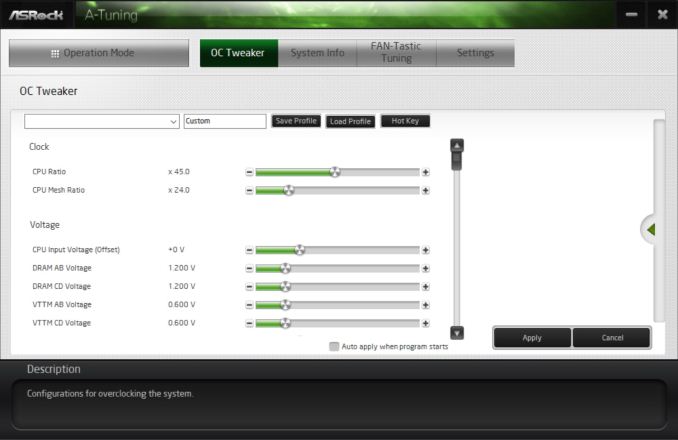
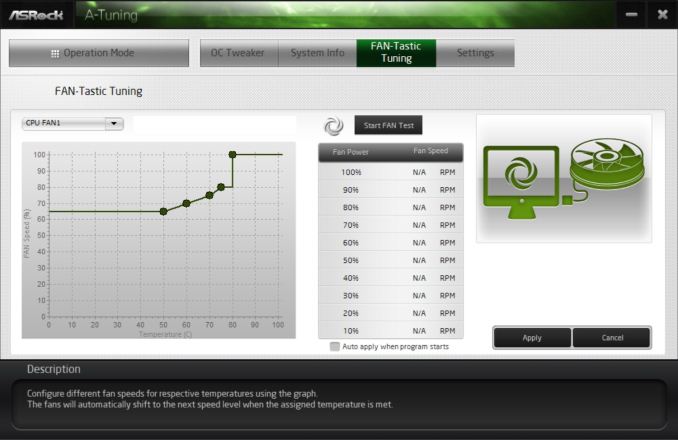
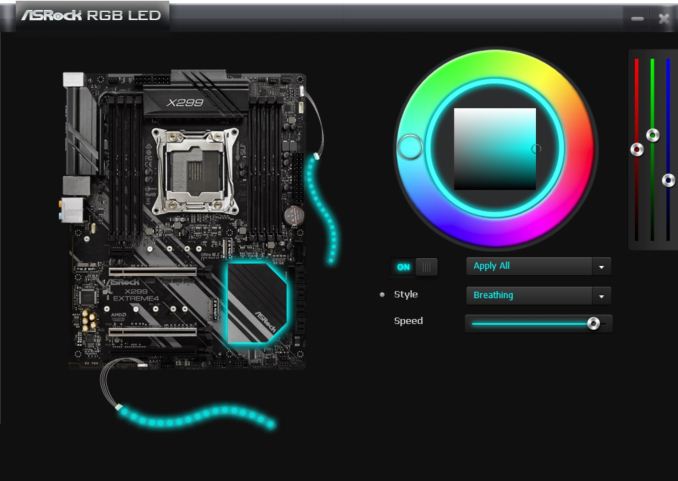
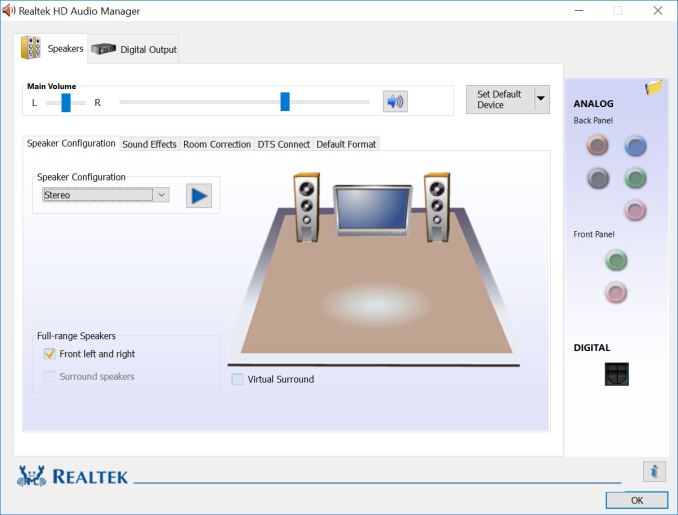














23 Comments
View All Comments
Ket_MANIAC - Thursday, April 26, 2018 - link
Not to mention, not a single X399 motherboard review. Especially considering those CPU's are datacenter products and AnandTech specializes in reviewing products pertaining to that category.MDD1963 - Friday, April 27, 2018 - link
Threadripper/X399 is HEDT, not really 'Datacenter'....(not that it would do badly in a smal/medium business, for sure)Galcobar - Monday, April 30, 2018 - link
Considering this latest X299 review is labelled as HEDT, and almost every motherboard review lately has been for X299, a review of X399 as an HEDT platform should fit right in.Somehow, no.
If it's so good for the industry to have AMD back on a competitive footing, it only makes sense to provide at least a few crumbs on the platform components. What's the point of reviewing the processors, and never the motherboards required to run the processors?
Ket_MANIAC - Tuesday, May 1, 2018 - link
My thoughts exactly. Hopefully, by the time 2nd gen Threadripper launches, they will have reviews. Hopefully! I loved this website more when Anand ran it.DanNeely - Thursday, April 26, 2018 - link
In addition to how much RGB cancer a board has, could you start noting if it can all be disabled in BIOS/etc?Total Meltdowner - Thursday, April 26, 2018 - link
Hahaha, so true. The last thing I need is my room glowing at night if I leave my computer on to DL torrents.StrangerGuy - Friday, April 27, 2018 - link
LED indicators are so bright these days to the point of obnoxious in an unlit room.CEH - Thursday, April 26, 2018 - link
I run an Asrock Z270M Extreme 4 with macOS High Sierra and Windows 10, chosen mainly for its Thunderbolt 3 AIC. I've been very happy with its function and performance. As well as good value for money, they provide very good micro-ATX products. I'm very interested in their X299M Extreme 4. Will you be reviewing it soon?MDD1963 - Friday, April 27, 2018 - link
Intel would sell a lot more of these if they'd bring the price down to to $499 or so.... :)MDD1963 - Friday, April 27, 2018 - link
(7900X, I mean....)